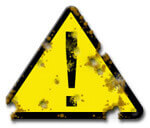Recommendations for Safe Use of Neodymium Magnets.
The strength of magnets neodymium is greater than other types of magnets
Neodymium magnets are incredibly strong magnets that can be hazardous in specific circumstances. It is important to remember that neodymium magnets are extremely powerful and can attract other metal objects, which can lead to harm or destruction to the body.
If you need to work with neodymium magnets, it is important to exercise caution and follow appropriate safety measures, such as wearing protective clothing (e.g., protective goggles), avoiding working with magnets near computers or other electronic devices, and keeping magnets apart from each other to prevent them from attracting and potentially causing harm or projectiles to be ejected in case of collision, which can pose a threat to your vision.
Neodymium magnets are also very hard and brittle, so it is advisable to avoid strikes, throwing, or dropping magnets as they can quickly break or split.
In conclusion, neodymium magnets are powerful tools that can be dangerous if not used with due caution, so it is important to observe appropriate safety measures when working with them.

Immediately apply ice to any pinched skin to reduce swelling. In the case of contact with larger magnets, significant injuries can occur.
The use of magnets should take place on a metal table or alternatively on a magnetic surface. Magnets should remain where you put them and not "fly" simultaneously to others.
When holding magnets in your hands, you should remember to keep your hands at a proper distance from each other.
Magnets retain their magnetic properties for decades when properly handled and stored at room temperature.
Children should NEVER be allowed to play with neodymium magnets.
Remember to keep your magnets at least 20 cm away from sensitive electrical devices and storage media.
If you work with magnets, you should wear safety glasses and protective gloves (when needed).
To separate magnets, grasp the top magnet, remove it from the stack, and pull it apart swiftly.
If you injure yourself and experience significant injury, seek immediate medical help.
You cannot drill or heat neodymium magnets.
Exercise Caution with Neodymium Magnets
Neodymium Magnets can attract to each other, pinch the skin, and cause significant swellings.
In the situation of holding a finger in the path of a neodymium magnet, in such a case, a cut or even a fracture may occur.
Neodymium magnets can demagnetize at high temperatures.
While Neodymium magnets can lose their magnetic properties at high temperatures, it's important to note that the extent of this effect can vary based on factors such as the magnet's material, shape, and intended application.
Neodymium magnets are the strongest magnets ever invented. Their power can shock you.
To handle magnets properly, it is best to familiarize yourself with our information beforehand. This will help you avoid significant harm to your body and the magnets themselves.
Dust and powder from neodymium magnets are highly flammable.
Do not attempt to drill into neodymium magnets. Mechanical processing is also not recommended. If the magnet is crushed into fine powder or dust, it becomes highly flammable.
You should keep neodymium magnets at a safe distance from the wallet, computer, and TV.
The strong magnetic field generated by neodymium magnets can damage magnetic media such as floppy disks, video tapes, HDDs, credit cards, magnetic ID cards, cassette tapes, or other devices. They can also damage devices like video players, televisions, CRT computer monitors. Do not forget to keep neodymium magnets away from these electronic devices.
Under no circumstances should neodymium magnets be brought close to GPS and smartphones.
Intense magnetic fields generated by neodymium magnets interfere with compasses and magnetometers used in navigation, as well as internal compasses of smartphones and GPS devices.
Magnets should not be treated as toys. Therefore, it is not recommended for youngest children to have access to them.
Neodymium magnets are not toys. You cannot allow them to become toys for children. Small magnets pose a serious choking hazard or can attract to each other in the intestines. In such cases, the only solution is to undergo surgery to remove the magnets, and otherwise, it can even lead to death.
Neodymium magnets are highly delicate, they easily crack and can become damaged.
Neodymium magnetic are extremely delicate, and by joining them in an uncontrolled manner, they will break. Neodymium magnets are made of metal and coated with a shiny nickel surface, but they are not as hard as steel. At the moment of collision between the magnets, sharp metal fragments can be dispersed in different directions.
Neodymium magnets should not be near people with pacemakers.
In the case of neodymium magnets, there is a strong magnetic field. As a result, it interferes with the operation of a heart pacemaker. However, if the magnetic field does not affect the device, it can damage its components or deactivate the device when it is in a magnetic field.
The magnet coating is made of nickel, so be cautious if you have an allergy.
Studies show a small percentage of people have allergies to certain metals, including nickel. An allergic reaction often manifests as skin redness and rash. If you have a nickel allergy, you can try wearing gloves or simply avoid direct contact with nickel-plated neodymium magnets.
Warning!
Please read the article - What danger lies in neodymium magnets? You will learn how to handle them properly.

